A historic Alberta cemetery is being reclaimed to honour the Black pioneers who are buried there
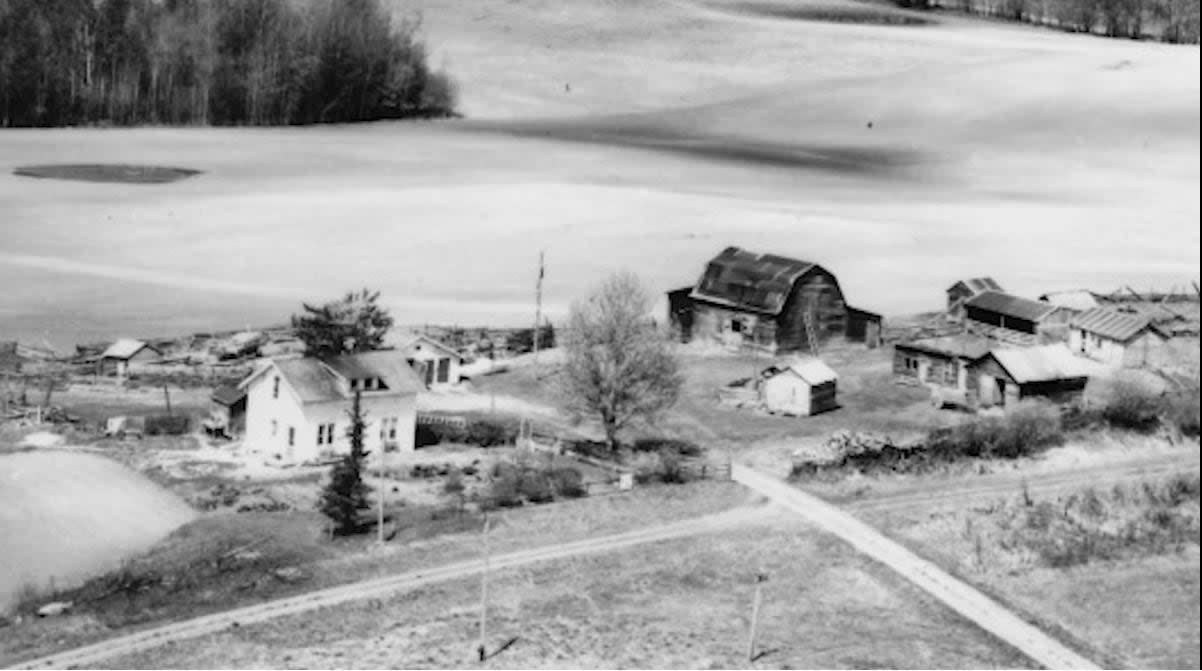
Decades after a historic Alberta cemetery was reclaimed from the forest, a group of volunteers is preserving both the graves and the stories of the Black pioneers who were buried there.
Headstones will soon be placed to mark the burial plots of 13 men, women and children interred at the Bethel Baptist Cemetery, one of the last remaining traces of the once-thriving Black settlement of Campsie, Alta., about 135 kilometres northwest of Edmonton.
Descendents of the settler families are supporting the efforts of the Barrhead Church of Jesus Christ of the Latter-Day Saints and the Barrhead and District Family Community Support Services in restoring the cemetery and fundraising for the stone markers.
"I feel honoured," said Christine Beaver, whose father James was the community's last living descendant. "Because of their efforts, we're able to tell our story.
"If that cemetery had been allowed to ... become reclaimed by the forest, we wouldn't even be having this conversation."
'Coming to light'
Her great-grandparents, James Moses Beaver and Hattie Beaver, were among the first Black settlers to arrive in Campsie. They donated the land where the cemetery now stands; a handful of original outbuildings still stand on the nearby property.
Her uncle, George Kenneth Beaver, is buried there. He died in 1940 a few days after being born.
Campsie is an overlooked part of Alberta's past, said Deborah Beaver, Christine's sister. But its story deserves to be told as part of the contributions of Black settlers on the Prairies, she said.
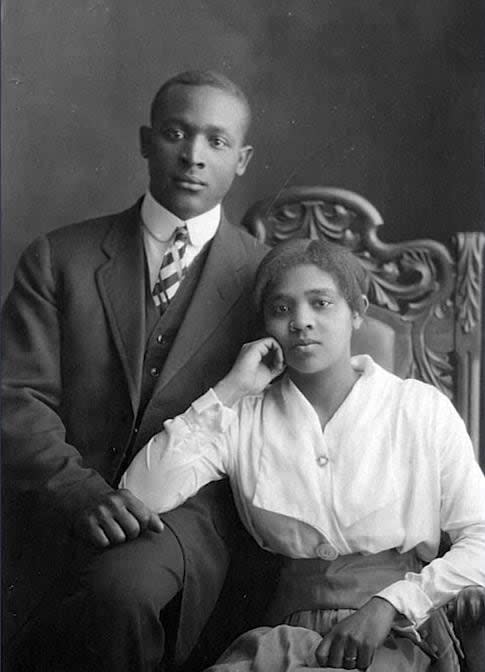
Debbie and Christine Beaver's grandparents, Walker and Ivy Beaver (Submitted by Deborah Beaver)
"This community hasn't really been given a whole bunch of recognition," said Beaver, the founder of Black Settlers of Alberta and Saskatchewan Historical Society.
"Now, finally, it's coming to light. It's being recognized."
Campsie was settled in the early 1900s when hundreds of African-Americans, fleeing escalating violence of newly enacted Jim Crow laws, left the United States and settled in the Canadian Prairies.
Enticed by the promise of free land, they came north by the hundreds. By 1911, about 1,000 had crossed the border.
They settled primarily in five isolated, rural communities closely connected by kinship and trade: Campsie, Junkins (now Wildwood, Alta.), Keystone (now Breton, Alta.), Pine Creek (now Amber Valley, Alta.), and Maidstone, Sask.
About 40 settlers, many from Texas and Oklahoma, settled on homesteads in the Campsie area. Soon after arriving, they set to work building the Bethel Baptist Church. The cemetery was established the following year on a two-acre plot.
The church burned a few years after was constructed but the cemetery remained in use for decades.
Among the first known burials came after the 1920 deaths of Walter Smith as well as unnamed infant born to Mr. and Mrs. Ed Smith.
The last pioneer to be interred was in 1948 but in 2002, special permission was granted for Edna Lillian Lawrence to be buried there. She was the granddaughter of Samuel and Margaret Risby, who are among the original pioneers buried at the cemetery.
At its peak in the early 20th century, about 35 families lived in Campsie, said Christine Beaver. The settlers faced many hardships, including racial hostility and harsh environmental, social and economic conditions, she said.
Many were farmers who supplemented their income working as labourers or coal miners during the winter months.
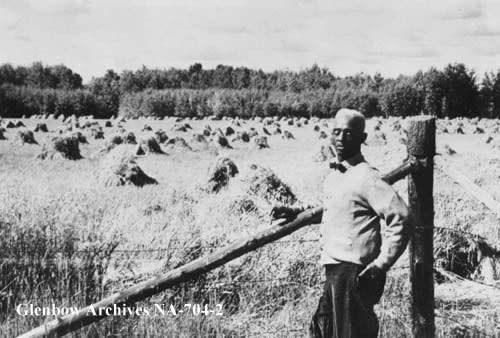
In this photograph from the late 1940s, farmer J. D. Edwards stands beside a grain field in Amber Valley, Alta., one of four Black settlements located in close proximity in central Alberta and Saskatchewan. (Glenbow Archives)
The Beaver family first arrived around 1910 from Oklahoma. After a difficult border crossing inspection, they made their way to Edmonton by train. That spring, they packed an ox cart and headed north on foot, taking three days to make the journey to Campsie.
Life was harsh, especially during those first few years. The Beavers relied on a single barrel of salted meat for much of their sustenance. Their first winter, they took shelter in a crude dugout cut into the rough, swampy land they had been given.
The Beavers remained in the area for decades but, as the years passed, most of the settler families moved away — and the cemetery they had established was soon swallowed by weeds and brush.
Restoration work began in 1997. Bill Warwaryick, a member of the Barrhead congregation, said the project began as part of a worldwide day of service for the Church of Jesus Christ of Latter-day Saints.
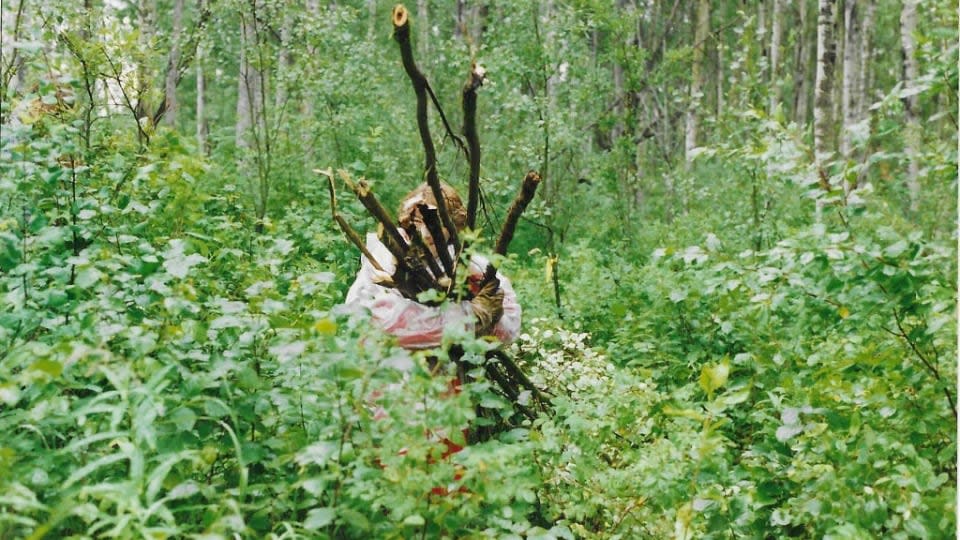
After years of neglect, the cemetery had become overgrown. In this photograph from 1997, a volunteer carries away a bundle of tree branches as work begins to restore the site. (The Church of Jesus Christ of Latter-day Saints)
That summer, church members and other community volunteers spent hundreds of hours clearing the site of weeds and willow branches and then searched for the graves of the 13 known graves, marked only with small, faded markers.
"A lot of them were hidden by the brush and had grown over," he said.
"It was in very rough shape."
Volunteers continued to maintain the site and later installed aluminum plaques to mark the graves. As the metal markers became increasingly weathered, the church decided it was time to replace them with something more permanent, Warwaryick said.
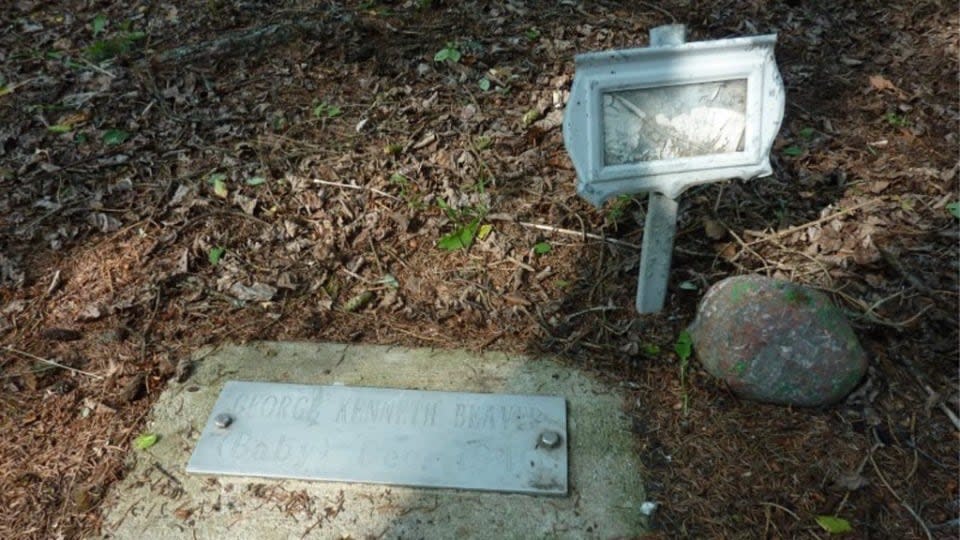
In all, 13 people from the Campsie settlement are known to have been buried at the cemetery. Among the dead is George Kenneth Beaver, who died as an infant. (The Church of Jesus Christ of Latter-day Saints)
Approximately $8,000 was needed for the project when fundraising efforts began last year. A remaining $2,700 of that total is still needed to install the headstones this spring, he said.
Each stone marker has been carefully commissioned with help from the Beavers, he said.
Thanks to their genealogical research, additional details — including given names, maiden names, birth dates and exact death dates — will be included on the new headstones.
The project started as a way for the congregation to perform good works in the community but it's become something more, Warwaryick said.
Tracing the roots of Alberta's family trees, and preserving that history for the next generation, is rewarding work, he said.
"I don't know how to explain it. It just comes deeper into our hearts," he said. "You just have a feeling that this is something important."
For more stories about the experiences of Black Canadians — from anti-Black racism to success stories within the Black community — check out Being Black in Canada, a CBC project Black Canadians can be proud of. You can read more stories here.

(CBC)

